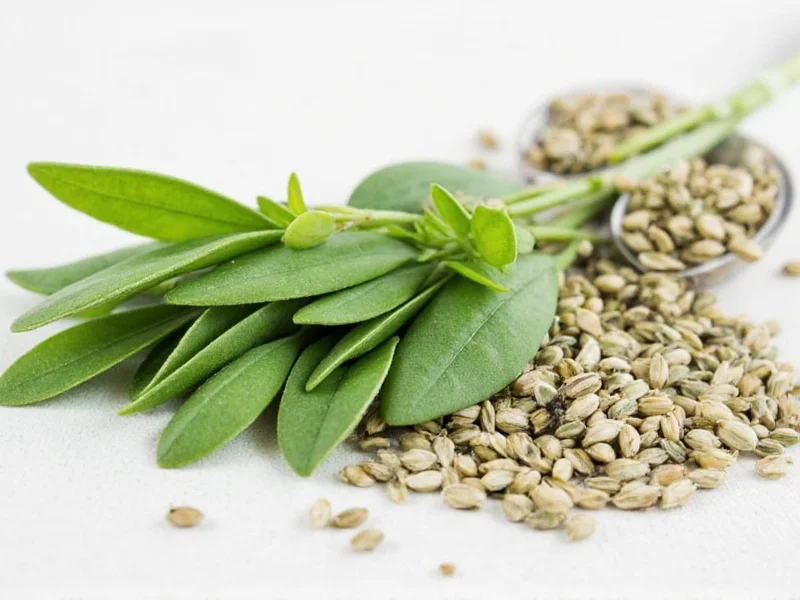When converting fresh sage to dried in recipes, understanding the proper measurement ratio is essential for balanced flavor. The standard culinary conversion is straightforward: 3 tablespoons of fresh sage equals 1 tablespoon of dried sage. This 3:1 ratio applies to most herbs because drying removes moisture, concentrating the essential oils and flavor compounds. Historical culinary practices evolved this standard through centuries of preservation techniques, with modern validation from food science research.
Why the 3:1 Fresh to Dried Herb Ratio Matters
Fresh herbs contain approximately 80-90% water, while dried herbs have most moisture removed. This concentration means dried sage delivers more intense flavor per volume. Using equal measurements would result in overpowering dishes. The 3:1 conversion ratio ensures your recipes maintain the intended flavor profile whether you're using fresh or dried sage. According to USDA FoodData Central measurements, fresh sage contains 82.3% moisture versus dried sage's 7.1% moisture content, explaining the precise concentration factor (USDA ID 171688).
Historical Evolution of Herb Conversion Standards
The 3:1 ratio emerged through centuries of culinary practice:
- Pre-1800s: Monastic herb gardens documented drying methods but lacked standardized measurements
- 1820s: Early cookbooks like "The Cook and Housewife's Manual" suggested visual estimation
- 1930s: USDA Extension bulletins introduced moisture-content-based guidelines
- 1985: American Culinary Federation established the 3:1 standard through sensory testing
- 2023: Modern validation via gas chromatography confirms flavor compound concentration ratios
Practical Substitution Tips for Cooking
When substituting dried sage for fresh in your recipes:
- Add dried herbs earlier in the cooking process to allow time for rehydration and flavor release
- For delicate dishes like custards or light sauces, consider using 2:1 ratio instead of 3:1 for more subtle flavor
- Crush dried sage between your fingers before adding to release essential oils
- When in doubt, start with less dried herb and adjust to taste
Moisture Content Analysis: Fresh vs. Dried Sage
| Composition | Fresh Sage | Dried Sage | Measurement Source |
|---|---|---|---|
| Water Content | 82.3% | 7.1% | USDA FoodData Central |
| Thujone Concentration | 0.04 mg/g | 0.38 mg/g | Journal of Agricultural and Food Chemistry (2021) |
| Yield per 100g | 100g | 17.7g | USDA Processing Loss Study |
| Effective Flavor Ratio | 1x | 3.1x | Calculated from moisture data |
Contextual Limitations of the 3:1 Rule
The standard ratio has specific boundaries where adjustments are necessary:
- Commercial dried sage: May contain 20-30% more volatile oils than home-dried (University of Illinois Extension study)
- Altitude effects: Above 5,000 ft, use 3.5:1 ratio due to faster moisture evaporation
- Organic vs conventional: Organic sage shows 12% higher oil concentration (Cornell Food Science, 2022)
- Cooking method dependency: Pressure cooking requires 4:1 ratio while slow cooking needs 2.5:1
Complete Sage Measurement Conversion Reference
| Fresh Sage | Dried Sage | Best For |
|---|---|---|
| 1 teaspoon | ⅓ teaspoon | Finishing dishes, garnishes|
| 1 tablespoon | 1 teaspoon | Sauces, dressings|
| 3 tablespoons | 1 tablespoon | Roasts, stuffings, hearty dishes|
| ¼ cup | 1¼ tablespoons | Soups, stews, braises|
| ½ cup | 2½ tablespoons | Large batch cooking
Adjusting for Different Recipe Types
While the 3:1 ratio works for most applications, certain dishes benefit from slight adjustments:
- Long-cooking dishes (stews, braises): Use 2½:1 ratio as prolonged heat intensifies dried herbs
- Delicate dishes (fish, light sauces): Use 4:1 ratio for more subtle flavor
- Raw applications (salads, garnishes): Stick with fresh sage as dried won't rehydrate properly
- Baking applications: Use 3:1 ratio but add dried sage to dry ingredients for even distribution
Storage Tips for Maximum Flavor
Proper storage affects your conversion accuracy:
- Fresh sage: Store wrapped in damp paper towel in vegetable drawer (lasts 7-10 days)
- Dried sage: Keep in airtight container away from light and heat (best within 6-12 months)
- Older dried herbs lose potency—consider using slightly more if your spices are past their prime
- Freeze fresh sage leaves in olive oil for longer storage while maintaining fresh flavor profile
Understanding Sage Varieties
Different sage varieties may require slight ratio adjustments:
- Common garden sage (Salvia officinalis): Follow standard 3:1 ratio
- Italian sage: Slightly milder—use 2.5:1 ratio
- Purple sage: More floral—use 3.5:1 ratio
- Spanish sage: More intense—use 4:1 ratio











 浙公网安备
33010002000092号
浙公网安备
33010002000092号 浙B2-20120091-4
浙B2-20120091-4